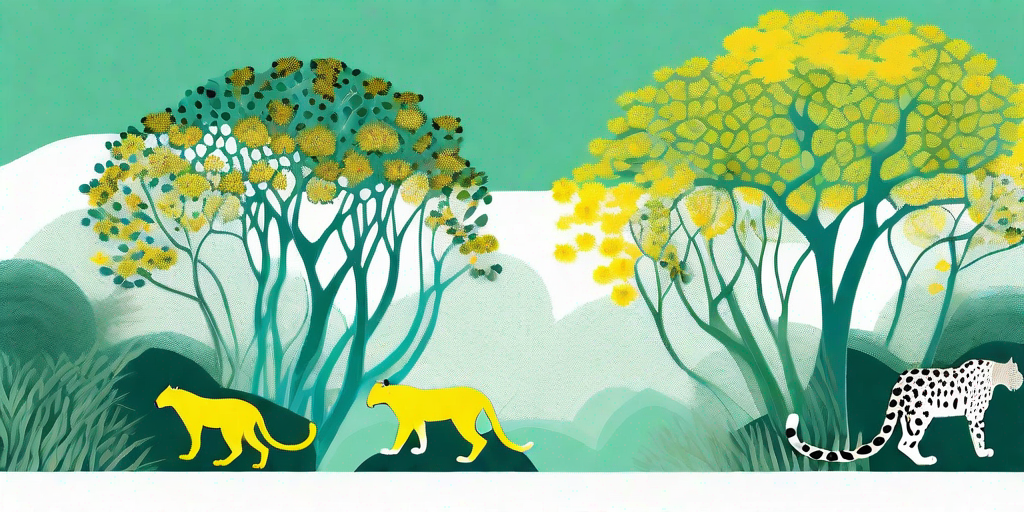
Welcome, fellow tree enthusiasts, to the wild and wonderful world of Leopard Trees. If you're not a tree enthusiast yet, don’t worry, by the end of this read, you might just find yourself joining the club. So, buckle up, and let's embark on a journey to explore the fascinating world of these spotted beauties.
What on Earth is a Leopard Tree?
For those of you who are new to the game, a Leopard Tree, scientifically known as Caesalpinia ferrea, is a semi-deciduous tree native to Brazil. Now, before you ask, no, it doesn't grow leopards. The name comes from its unique bark, which is dappled and spotted, much like the coat of a leopard.
These trees are not only stunning to look at, but they also serve a variety of purposes. They're used for shade, ornamental purposes, and even for their medicinal properties. But more on that later. Let's first dive into the physical characteristics of these spotted beauties.
Physical Characteristics of Leopard Trees
Height and Structure
Leopard Trees can grow up to 15 meters tall, which is about the height of a four-story building. So, if you're planning to plant one in your backyard, make sure you've got plenty of space. They have a spreading canopy that provides ample shade, making them an excellent choice for parks and large gardens.
The trunk of the Leopard Tree is truly a sight to behold. It's smooth and has a greyish hue, with dark patches that resemble leopard spots. Hence the name. The trunk is also quite sturdy, making it a popular choice for woodworking.
Leaves and Flowers
The leaves of the Leopard Tree are small, shiny, and dark green in color. They're pinnate, which means they're divided into leaflets, giving them a feathery appearance. The leaflets close during the night and open up during the day, which is a fun little party trick to show your friends.
The flowers, on the other hand, are bright yellow and bloom in clusters. They're quite striking and add a pop of color to the tree. The flowering season is usually in the summer, but it can vary depending on the climate.
Uses of Leopard Trees
Ornamental Purposes
Thanks to their unique appearance, Leopard Trees are often used for ornamental purposes. They're a popular choice for landscaping, thanks to their low maintenance needs and their ability to provide ample shade. Plus, who wouldn't want a tree that looks like it's been painted by a leopard in their garden?
They're also used in bonsai, a Japanese art form that involves growing miniature trees in containers. The Leopard Tree's small leaves and unique trunk make it an excellent choice for this art form.
Medicinal Uses
Leopard Trees are not just pretty to look at, they also have a variety of medicinal uses. The bark is used in traditional medicine to treat various ailments, including fever, inflammation, and skin diseases. However, it's important to note that these uses are not scientifically proven, so don't go chewing on a Leopard Tree bark just yet.
The seeds of the Leopard Tree are also used in traditional medicine. They're believed to have antifungal properties, and are used to treat skin infections. Again, these uses are not scientifically proven, so it's best to consult a healthcare professional before trying any home remedies.
How to Grow a Leopard Tree
Now that we've covered the basics, let's get down to the nitty-gritty. How do you grow a Leopard Tree? Well, it's not as complicated as you might think. Here's a step-by-step guide:
- Choose a spot with well-drained soil and plenty of sunlight.
- Plant the seeds about 1 inch deep in the soil.
- Water the seeds regularly, but don't overwater. The soil should be moist, not soggy.
- Wait for the magic to happen. The seeds should germinate in about two weeks.
- Once the tree is established, it requires minimal care. Just make sure it gets enough water and sunlight, and it should thrive.
Frequently Asked Questions
Before we wrap up, let's address some common questions about Leopard Trees.
Are Leopard Trees fast-growing?
Yes, Leopard Trees are considered fast-growing. They can reach their full height in about 10 years, which is quite impressive for a tree.
Are Leopard Trees evergreen?
Leopard Trees are semi-deciduous, which means they lose their leaves for a short period each year. However, they're often mistaken for evergreens because they remain green for most of the year.
Can Leopard Trees be grown indoors?
While Leopard Trees can technically be grown indoors, they're best suited for outdoor environments. They need plenty of sunlight and space to grow, which can be hard to provide indoors.
And there you have it, folks. A comprehensive guide to the fascinating world of Leopard Trees. Whether you're a seasoned tree enthusiast or a newbie, we hope this article has piqued your interest in these spotted beauties. So, the next time you spot a Leopard Tree, take a moment to appreciate its beauty. After all, it's not every day you come across a tree that looks like it's been painted by a leopard.















